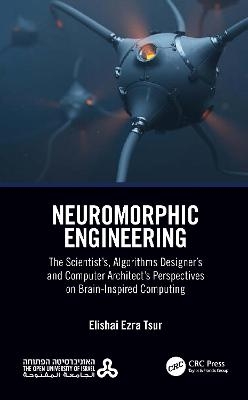
Neuromorphic Engineering
CRC Press (Verlag)
978-0-367-67680-3 (ISBN)
The brain is not a glorified digital computer. It does not store information in registers, and it does not mathematically transform mental representations to establish perception or behavior. The brain cannot be downloaded to a computer to provide immortality, nor can it destroy the world by having its emerged consciousness traveling in cyberspace. However, studying the brain's core computation architecture can inspire scientists, computer architects, and algorithm designers to think fundamentally differently about their craft.
Neuromorphic engineers have the ultimate goal of realizing machines with some aspects of cognitive intelligence. They aspire to design computing architectures that could surpass existing digital von Neumann-based computing architectures' performance. In that sense, brain research bears the promise of a new computing paradigm. As part of a complete cognitive hardware and software ecosystem, neuromorphic engineering opens new frontiers for neuro-robotics, artificial intelligence, and supercomputing applications.
The book presents neuromorphic engineering from three perspectives: the scientist, the computer architect, and the algorithm designer. It zooms in and out of the different disciplines, allowing readers with diverse backgrounds to understand and appreciate the field. Overall, the book covers the basics of neuronal modeling, neuromorphic circuits, neural architectures, event-based communication, and the neural engineering framework.
Dr. Elishai Ezra Tsur is the principal investigator at the Neuro & Biomorphic Engineering Lab (NBEL-lab.com) and an Assistant Professor at the Open University of Israel. Elishai Holds degrees in Life sciences (B.Sc), Philosophy and History (B.A), Computer Science (M.Sc), Bioengineering (M.Sc, Ph.D.), and Computational Neuroscience (Post Doc).
Part 1. Introduction and overview. 1. The Scientist Perspective. 2. Introducing the perspective of the computer architect. 3. Introducing the perspective of the algorithm designer. Part 2. The Scientist's Perspective. 4. Biological description of neuronal dynamic. 5. Models of point neuronal dynamic. 6. Models of morphologically detailed neurons. 7. Models of network dynamic and learning. Part 3. The Computer Architect's Perspective. 8. Neuromorphic hardware. 9. Communication and hybrid circuit design. 10. In-memory computing with memristors. Part 4. The Algorithms Designer's Perspective. 11. Introduction to neuromorphic programming. 12. The Neural Engineering Framework (NEF). 13. Learning spiking neural networks.
| Erscheinungsdatum | 31.08.2021 |
|---|---|
| Zusatzinfo | 160 Line drawings, black and white; 10 Halftones, black and white; 170 Illustrations, black and white |
| Verlagsort | London |
| Sprache | englisch |
| Maße | 156 x 234 mm |
| Gewicht | 680 g |
| Themenwelt | Mathematik / Informatik ► Informatik ► Theorie / Studium |
| Naturwissenschaften ► Biologie ► Humanbiologie | |
| Naturwissenschaften ► Biologie ► Zoologie | |
| ISBN-10 | 0-367-67680-X / 036767680X |
| ISBN-13 | 978-0-367-67680-3 / 9780367676803 |
| Zustand | Neuware |
| Informationen gemäß Produktsicherheitsverordnung (GPSR) | |
| Haben Sie eine Frage zum Produkt? |
aus dem Bereich


